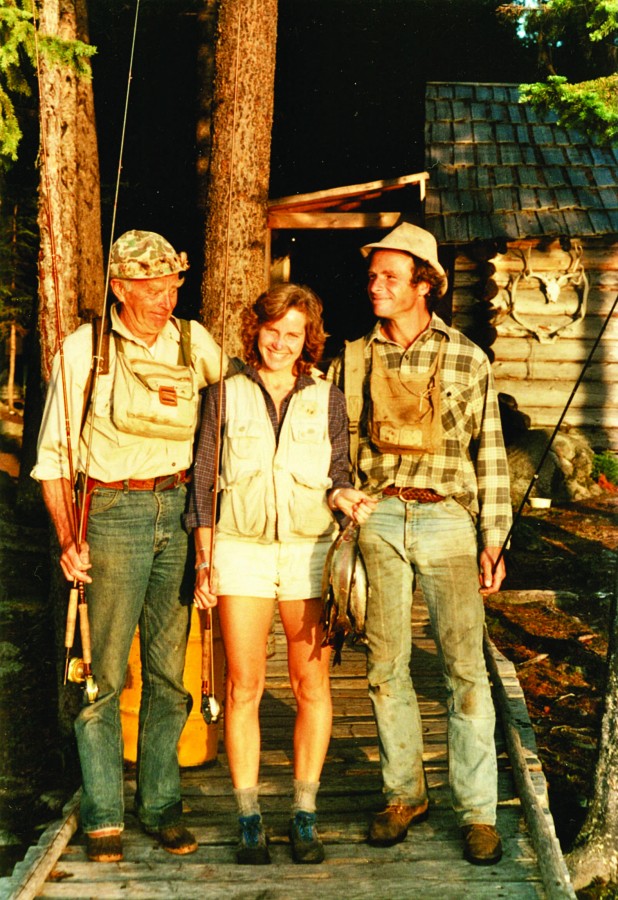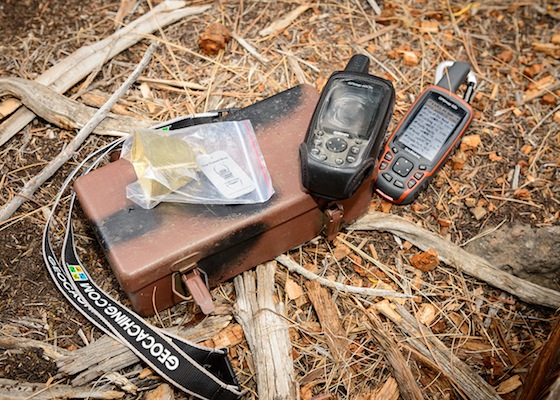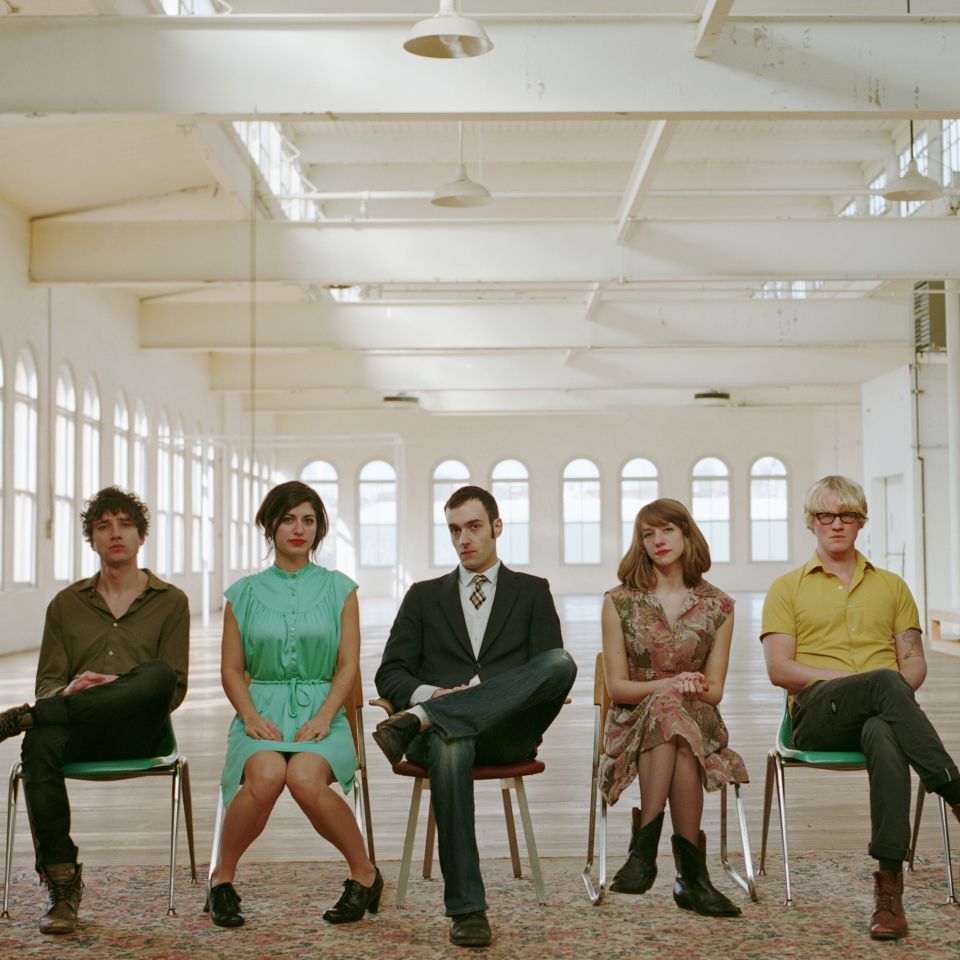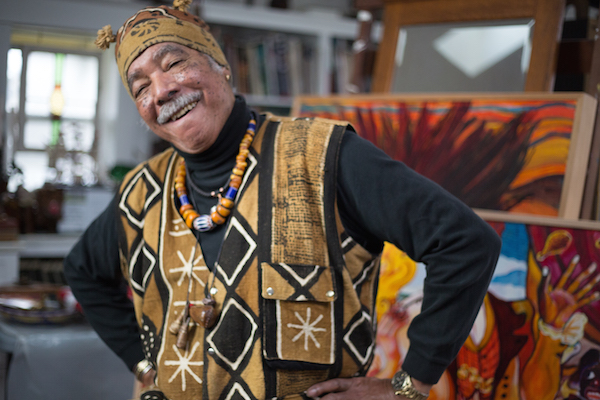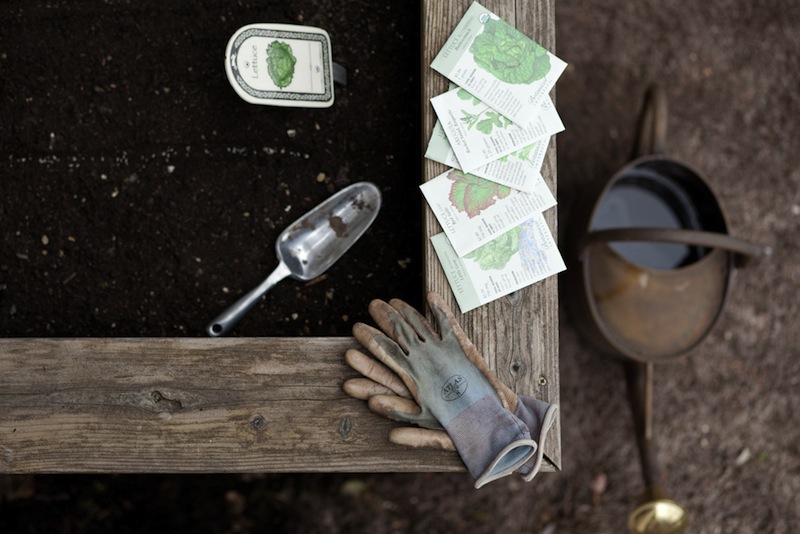Rounding a bend in the Rogue River’s Wild and Scenic section near Winkle Bar, rafter and guide Eddy Miller pointed to a clearing on a hillside along the river’s northern banks. “There,’ he pointed, “is Happy Hill.’
It became a multigenerational identity for Eddy Miller, who embodied the beauty of the Rogue River. He was the consummate boatman—methodical in his approach, accomplished at reading water and deft with the oars.
The story of Happy Hill and how the Miller family came to the land, connected to it and the Rogue River begins in 1928.
Eddy Miller’s grandfather, Astoria and later Roseburg lumberman, Charles, grandmother Lesley and
great grandmother Jessie, traveled from Portland to make a fishing trip on the Rogue.
The women were “the first two women to make the arduous trip,” according to an old diary of Eddy Miller’s aunt Laurie Cummins.
After meeting some homesteaders near Winkle Bar, seventeen miles west of the Grave Creek put in, “Dad fell in love with the place and bought a half acre to build a cabin on as soon as possible,” Cummins continued. “Dad wanted to spend a year living in the wilderness; mother wanted to go to Europe. So they compromised on eight months on the Rogue and four months in Europe.”
In the summer of 1929, without fanfare or a single sentence of press coverage, Eddy’s grandparents, Charles and Lesley Miller, along with their children Laurie, Charles Jr. and Jessie, undertook their first big family adventure, living life high on a hill above the Rogue without refrigeration, radio or telephone.
After getting to Grants Pass (population 4,666), the girls and their mother embarked on a two-day pack-train trip to Happy Hill while the men set out, according to Lesley Miller’s diary account, “in a newly constructed 17-foot rowboat loaded with blanket rolls, two suitcases, a motor for the boat, two pairs of oars, two fishing baskets, three guns, four fishing rods, a basket of food, camp kit, a bridge table and a kitchen stove.”
The boating party reached Rainey Falls at 7 a.m. on August 3. They portaged around the falls and headed downstream, stopping at Russian Bar for lunch.
Following lunch, Miller Sr. and Jr. walked around the rapid below the bar leaving it to Grants Pass hired boatman E.J. Allen to guide the boat through.
In her diary, Lesley Miller wrote: ”Allen took the boat through, but she was too heavily laden. She swamped and capsized in twelve feet of water at the foot of the rapids. Lost everything but a bedroll, which was picked up a mile downriver.”
By August 6, the entire Miller clan reunited at Happy Hill. “We had our canvas fly put up under the large oak in front of the frame work of our house,” Miller’s diary reads. “Under this we have a camp bed and a cot for each of the three children, a bridge table for books and lanterns, two camp chairs and a piece of canvas to step on. Here we will reside until our shack is finished.
“It is the most gorgeous spot imaginable surrounded by wooded hills, which separate just enough to show the most perfect view of the Rogue River winding through the canyon a mile and a half below.”
With the help of their nearest neighbor, Mr. Kelly, the Miller house soon started taking shape. Assisting Mr. Kelly was one Walter Critser who, “lives up on top of the mountain, makes moonshine and is a pretty tough article.”
The men helping build the Miller place were also constructing cabins for author Zane Grey down at the river’s edge. “They will be glad when the work is finished,” Miller noted of the workers. “They would rather fish and hunt and sit around than have regular jobs which, of course, is why they’re out here in the first place.”
On August 10, after marveling at the frightfully hot days followed by cool nights, Lesley Miller wrote: “During the hot weather, thousands of fish lie in the cool mouth of the creek, and it’s a wonderful sight that can be seen from the rocks above.”
When not watching the fish or fishing, the children practiced their musical instruments, still without a roof over their heads, as the bucolic summer unfolded.
By mid-August the house was finished. In late August the Millers received their first mail in months. “Charles and I went to bed and then sitting up by the light of a dim lantern read all our letters from home.”
August flowed into September and October with daily hikes, fishing excursions and swims. With the Happy Hill cabin built, there was shelter and the comfort of a warm fire at the end of the day.
In November, as winter set in, the Millers decided to end their Rogue stay. A diary entry dated November 20 said: “We came back to the upper end of Winkle Bar where we built our fire, cooked bacon and had lunch. Charles Jr. caught a steelhead and wonders if it will be his last this year. The oak trees haven’t shed their leaves yet—they are still a marvelous golden shade and the ground covered with leaves is the same. It’s as if we’re walking through golden forests.”
November 21, one of the neighbor’s hens took the place of a turkey for a Thanksgiving dinner. The children made place cards, we shined apples for table decorations and strung wild rosehips for cranberries with which to decorate the turkey. We all dressed up in our best clothes, spoke pieces and altogether, had a perfect evening all and at the end telling what we were most thankful for.”
Two days later, Eddy Miller’s grandmother’s diary entry reads: “Left Happy Hill after four of the happiest months of our lives, with the rest of our sabbatical year still to come.”
Much of the remainder of that year would be spent in Paris and the year would become a major event in Miller family history with the wilderness chapter of that story deeply ingrained in Eddy Miller’s psyche.
The stories from Happy Hill left a lasting impression on Eddy Miller, who would become an accomplished outdoorsman, rafter, river guide, fly-fisherman,skier and hiker. The outdoors and adventure were in his blood. There were childhood fishing trips with his father on the Umpqua and Rogue rivers and family fishing camp at a remote spot in British Columbia with his twin sister Jessie, and sisters Wendy and Cameron.
“There, they fished, split and stacked wood, improved trails, washed their clothes by hand, picked huckleberries and lived a rustic life,” Eddy Miller’s wife, Ann, recalled.
“I always loved how my grandparents made a snap decision to live on the river and did it,” said Miller as he worked the oars on a raft loaded down with gear on his final Rogue trip last spring. “Of course, the story of the men losing all the gear in the river was a family favorite.”
It would be hard to imagine Eddy Miller losing all the gear and his raft on something as tame, by modern standards, as the rapids at Russian Bar. On what would be his last float down the Rogue past Happy Hill, he navigated every obstacle and every rapid without his raft taking on so much as a drop of water.
Miller looked every bit the part of the river guide from his lean, well-tanned, muscular frame to his sharp piercing eyes and shock of prematurely white hair.
In camp, his gear was spartan in comparison to the hikers he was supporting on their multi-day trek along the Rogue River Trail. His biggest luxury was an ultralight cot he used for sleeping. All else was trimmed down to the essentials. Those essentials included his fly-fishing gear and a vast knowledge of the Rogue’s flora and fauna.
A trip with Eddy Miller was an adventure in river lore. “He was always ready to lead a group on a bird watching or plant identification excursion,“ said longtime friend and well respected international whitewater river explorer, Franz Helfenstein, “and if nobody wanted to go, he’d be off on his own.
“I never saw him without a smile on his face, and his favorite line for everything was, ‘That’s incredible.'”
In 1970, one of his advisers at The Fountain Valley School of Colorado, where Miller prepped, wrote that he was, “a great kid with a zest for life. His buoy and optimism is the stuff that helps keep the world afloat.”
Less than a month after floating past Happy Hill and regaling his fellow boatmen with the stories of the family adventure of 1929, Miller, 56, slipped and fell to his death. He was hiking during a layover on a rafting trip at the Middle Fork of Idaho’s Salmon River. Helfenstein was in the rafting party and stayed until his friend’s body was recovered.
Like his grandfather and father, Eddy’s teacher was the river, his students passengers along his river trips. As with many Oregonians, Miller’s life was a wilderness adventure undertaken with a serene smile. Happy Hill is still in the Miller family, albeit now as a sequestered retreat for Eddy Miller’s aunt, Laurie Cummins.
Roguish Delights
How to hike, bike, run or float the wild and scenic Rogue River
FLOAT
The most popular way to enjoy the forty-four-mile stretch of the Wild and Scenic section of the Rogue River is by raft, drift boat or kayak.
Floating the Wild and Scenic Rogue between May 1 and October 15 requires a BLM permit (blm.gov/or/index.php). Permits are doled out via a lottery system with all float trips checking in at the Grave Creek put-in near the town of Galice.
A majority of float-trippers bring along all their gear and camp out at least two nights while on the river. That noted, some floaters opt to travel light and take advantage of dining and sleeping in riverside lodges (see next page).
HIKE
For those who would rather make a Wild and Scenic hike, a trail parallels the entire section of the river. Permits are not required for hiking, but if a hiking group wants to stay in lodges, reservations are required. No matter which direction (Grave Creek to Illahe or vice versa), those planning to stay at Black Bar Lodge will get a rowboat ride (provided by the lodge) across the river and back to the trail the next day.
Some hiking groups prefer camping out and will make arrangements for gear support from raft companies such as Rogue Wilderness (wildrogue.com) and Rogue River Raft Trips (rogueriverraft.com)
Hiking or floating, car shuttles can be arranged through rafting companies or through Galice Resort. (galice.com)
RUN/BIKE
Running or biking the Rogue River Trail downriver or upriver over two days is becoming more popular. When running from Grave Creek downriver, it’s important to make sure the Illahe Lodge is open and ready to accept overnight guests.
When running upriver from Illahe, plan to get a ride into the town of Galice near the Grave Creek trailhead for an overnight stay at Galice Resort before returning to Illahe.
Lodges on the Wild and Scenic Rogue
Black Bar Lodge, Merlin
•Located ten miles downriver from Grave Creek across the river from the Rogue River Trail
•Access is by float craft or the lodge will ferry from the trail
•Reservations only
•Maximum of thirty-six people
•Black Bar will accommodate anyone in May, limited spaces after June 1
•Open May-November / 541.479.6507 / blackbarlodge.net
Clay Hill Lodge, Lyons
•Located thirty-three miles downriver from Grave Creek, about six miles upriver from Foster Bar
•Access is by boat, powerboat or hiking
•Reservations only
•Maximum of twenty guests
•Open May-November / 503.859.3772 / clayhilllodge.com
Marial Lodge, Grants Pass
•Located twenty-four miles downriver from Grave Creek
•Access by float craft, automobile and hiking
•Reservations only
•Open May 1-November 15 / 541.474.2057
Paradise Lodge Mile 58 on the Rogue
•Located twenty-four miles downriver from Grave Creek, just below Blossom Bar,
fifty-two miles upriver from Gold Beach
•Access by boat, tour boat, hiking trail or airplane
•Reservations only
•Maximum of fifty-five guests
•Open May-November / 541.842.2822 / paradise-lodge.com
Illahe Lodge, Agness
•Open on an irregular basis
•541.247.6111


